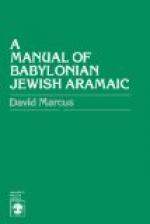CHAPTER VIII.
Preserving and Bottling.
Attention and a little practice will ensure excellence in such preserves as are in general use in private families; and it will always be found a more economical plan to purchase the more rare and uncommon articles of preserved fruits than to have them made at home.
The more sugar that is added to fruit the less boiling it requires.
If jellies be over-boiled, much of the sugar will become candied, and leave the jelly thin.
Every thing used for the purpose of preserving should be clean and very dry, particularly bottles for bottled fruit.
Fruit should boil rapidly before the sugar is added, and quietly afterwards—when preserves seem likely to become mouldy, it is generally a sign they have not been sufficiently boiled, and it will be requisite to boil them up again—fruit for bottling should not be too ripe, and should be perfectly fresh; there are various methods adopted by different cooks: the fruit may be placed in the bottles, and set in a moderate oven until considerably shrunken, when the bottles should be removed and closely corked; or the bottles may be set in a pan with cold water up to the necks, placed over the fire; when the fruit begins to sink remove them, and when cold fill up each bottle with cold spring water, cork the bottles, and lay them on their sides in a dry place.
To bottle red currants—pick them carefully from the stalk, and add, as the currants are put in, sifted white sugar; let the bottles be well filled and rosin the corks, and keep them with their necks downwards.
* * * * *
BRANDIED CHERRIES.
Put into a large wide mouthed bottle very ripe black cherries, add to them two pounds of loaf sugar, a quart of brandy, and a few cloves, then bruise a few more cherries, and simmer with sugar, strain and add the juice to the cherries in the bottle, cork closely, and keep in a warm dry place.
* * * * *
QUINCE MARMALADE.
Peel, cut into quarters, and core two pounds of sharp apples, and the same quantity of quinces; put them into a jar, with one pound of white sugar powdered and sprinkled over them; cover them with half a pint of water, and put in also a little bruised cochineal tied in a muslin. Set them in a slack oven till tender, take out the cochineal, and pulp the fruit to a marmalade.
Some cooks prefer boiling the sugar and water first and scalding the fruit till tender, and then adding them to the syrup.
* * * * *
DAMSON MARMALADE.
Is made in the same manner as quince, as also apricot marmalade, which is very fine; the fruit must be stoned, and some of the kernels put in with the fruit, which are peeled, and apricots are cut in pieces; they should be carefully pulped through a clean sieve.




